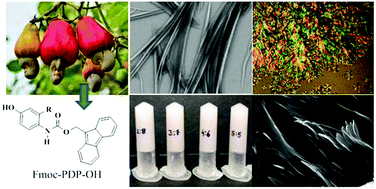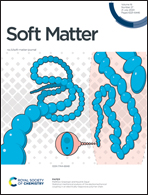Self-assembly of novel Fmoc-cardanol compounds into hydrogels – analysis based on rheological, structural and thermal properties†
Abstract
Hydrogels of low molecular weight molecules are particularly appealing for various biomedical applications such as drug delivery, tissue engineering, and antitumor therapy due to their excellent biocompatibility, biodegradability, and easy availability. Fmoc-peptide hydrogels form an essential category of these hydrogels. Herein we report a new class of Fmoc hydrogels in which cardanol (3-pentadecyl phenol (PDP)) is covalently linked with fluorenylmethyloxycarbonyl group. Cardanol is a plant-based renewable raw material, readily obtained from Cashew Nut Shell Liquid (CNSL). The long aliphatic chain of pentadecyl phenol helps in bringing a structural incompatibility and generates different nanostructures such as nanospheres, nanotapes, and nanofibers depending on Fmoc substitution and the solvents used. Stable hydrogels were formed from Fmoc-PDP in DMSO/H2O, and the critical aggregation concentration (CAC) and critical gelation concentration (CGC) were determined. The role of non-covalent forces such as hydrogen-bonding, hydrophobicity, and π–π stacking interactions in governing self-assembly to hydrogel formation was studied for Fmoc, DiFmoc and Boc groups attached to PDP. The thermal properties were analyzed, and smectic and nematic phases were identified for the molecules depending on the substitutions involved. Overall the study supports the mechanisms of aggregation and gelation in novel Fmoc-cardanol derivatives.



 Please wait while we load your content...
Please wait while we load your content...